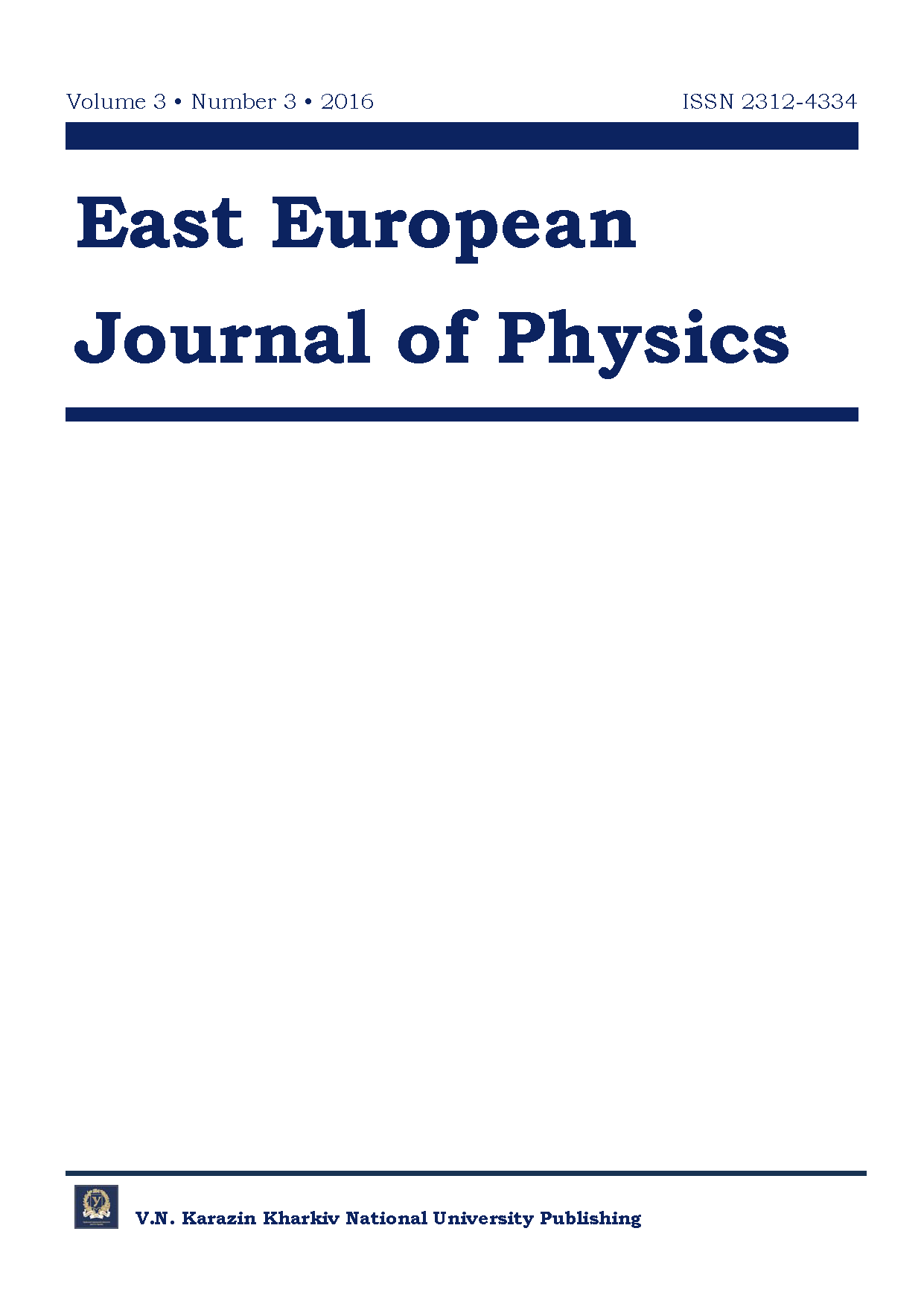Elimination of Singulariries in Causal Green Functions for Generalized Klein-Gordon and Dirac Equations on Light Cone
Abstract
Klein-Gordon and Dirac equations are generalized to eliminate divergences in the integrals for Green functions of these equations. The generalized equations are presented as products of the operators for the Klein-Gordon equation with different masses and similarly for the operators of the Dirac equation. The homogeneous solutions of derived equations are sums of fields, corresponding to particles with the same values of the spin, the electric charge, the parities, but with different masses. Such particles are grouped into the kinds (families, dynasties) with members which are the particle generations. The Green functions of derived equations can be presented as sums of the products of Green functions for the Klein-Gordon equation (the Dirac equation) and the definite coefficients. The sums of these coefficients equal zero. The sums of the products of these coefficients and the particle masses to some powers equal zero too, i.e. for these coefficients some relations exist. In consequence of these relations the singularities in Green functions can be eliminated. It is shown that causal Green functions of derived equations сan be finite in all the space-time. This is possible if minimal quantities of the generations Nb and Nf for the bosons and the fermions equal 3 and 6, respectively. An absence of singularities in the Green functions on light cone is related to an attenuation of particle interactions on short distances. It is shown explicitly for the generalization of the Yukawa potential.
Downloads
References
Treiman S.B., Jaсkiw R., Gross D.J. Lectures on current algebra and its applications. Princeton Univ. Press, Princeton, 1972; Moscow: Atomizdat, 1977. p. 93 (in Russ.)
Kulish Yu., Rybacyhuk E.V. Necessary generalization of Klein-Gordon and Dirac equations and existence of particle generations// Problems of Atomic Science and Technology.-2012.-№1 (77).-P. 16–20.
Kulish Yu. V., Rybachuk E. V. Divergences of integrals for Green functions and necessary existence of particle generations// Journal of Kharkiv National Univ.-2011.-№955.-Is.2/50/.- P. 4-14.
Fikhtengolts M. G. Course of differential and integral calculus. V. 3. – Nauka.- Moskow.- 1966.-P. 221. (in Russ.).
Budak B.M., Fomin S.V. Multiple integrals and series.-Nauka.- Moskow:-1967.-P. 387 – 401 (in Russ.)
Close F.E. An introduction to quarks and partons.-Academic Press.- London, New York, San Francisco.-1979; Mir.- Moscow.-1982.-P. 150 (in Russ.)
Feynman R.P., Kislinger M., Ravndal F. Current matrix elements from a relativistic quark model// Phys. Rev. D.- 1971.-Vol.3.-№11.-P. 2706 – 2732.
Bogolubov N.N., Shirkov D.V. Introduction to theory of quantized fields.–Nauka.- Moscow:-1967.-P. 465 (in Russ.)
De Alfaro V., Fubini S., Furlan G., Rosseti C. Currents in hadron physics.-North-Holland Publ. Comp. Amsterdam; American Elsevier Publ. Comp. Inc.-London, New York 1973; Nauka.-Moscow.-1976.-P.- 602. (in Russ.)
Whittaker E.T., Watson G.N. A course of modern analysis. V. 2.-.At the University Press.-Cambridge:-1927.-Gosudarstvennoe izdatel’stvo fisiko-matematicheskoj literatuty.- Moscow:-1963.-P. 215.
Berezhnoj Yu.A., Gakh A.G. Functions of theoretical physics.-Karazin V.N. Kharkov National University.-Kharkov.-2011.-124 P. (in Russ.).
Authors who publish with this journal agree to the following terms:
- Authors retain copyright and grant the journal right of first publication with the work simultaneously licensed under a Creative Commons Attribution License that allows others to share the work with an acknowledgment of the work's authorship and initial publication in this journal.
- Authors are able to enter into separate, additional contractual arrangements for the non-exclusive distribution of the journal's published version of the work (e.g., post it to an institutional repository or publish it in a book), with an acknowledgment of its initial publication in this journal.
- Authors are permitted and encouraged to post their work online (e.g., in institutional repositories or on their website) prior to and during the submission process, as it can lead to productive exchanges, as well as earlier and greater citation of published work (See The Effect of Open Access).








